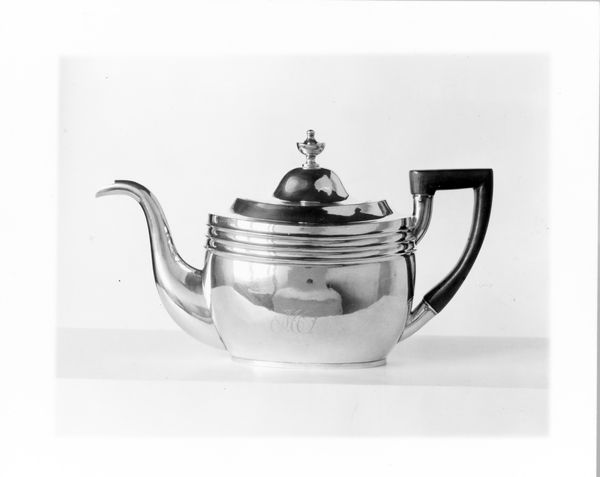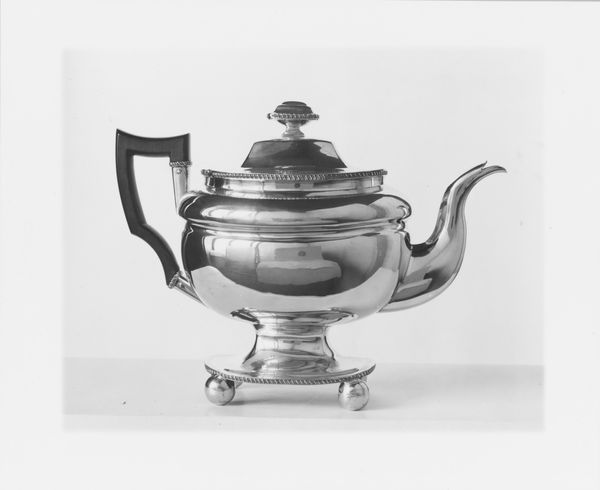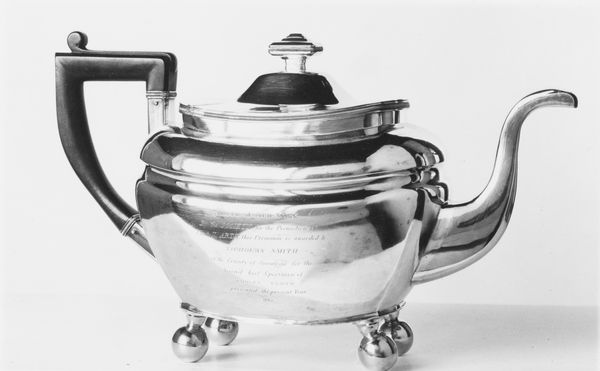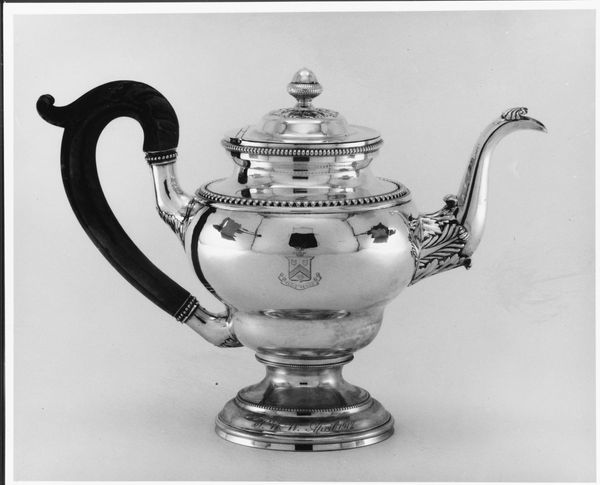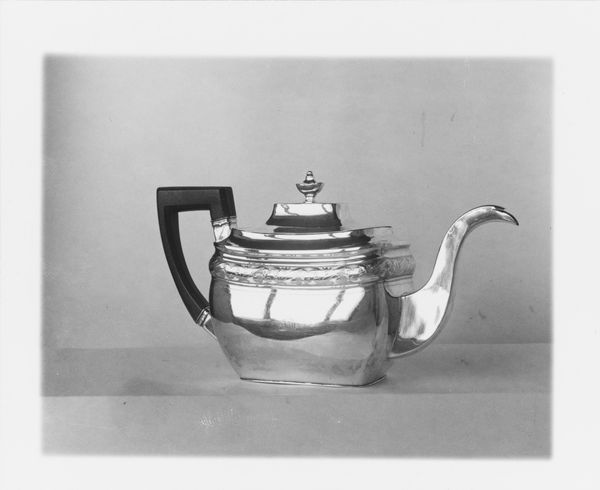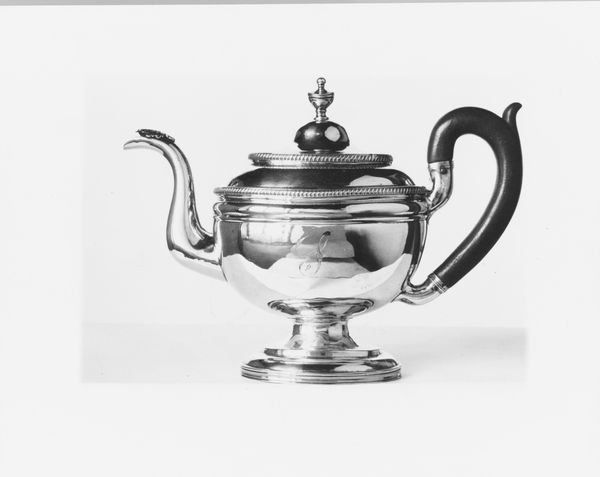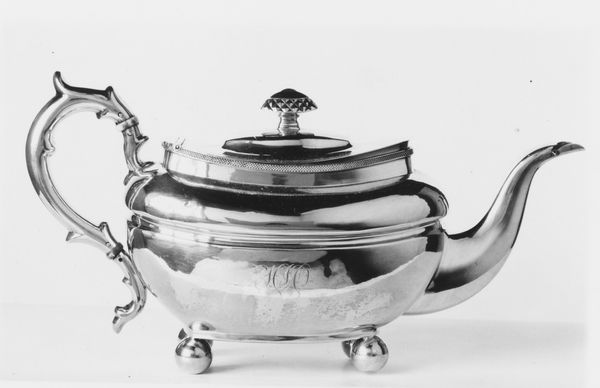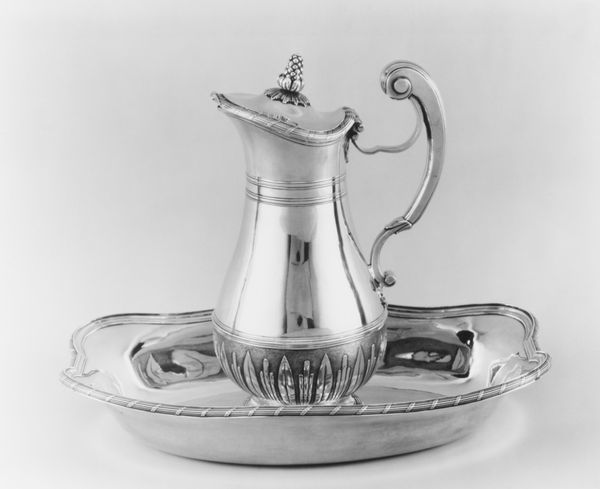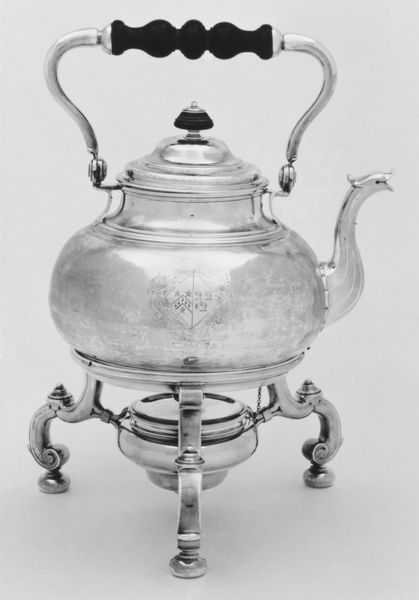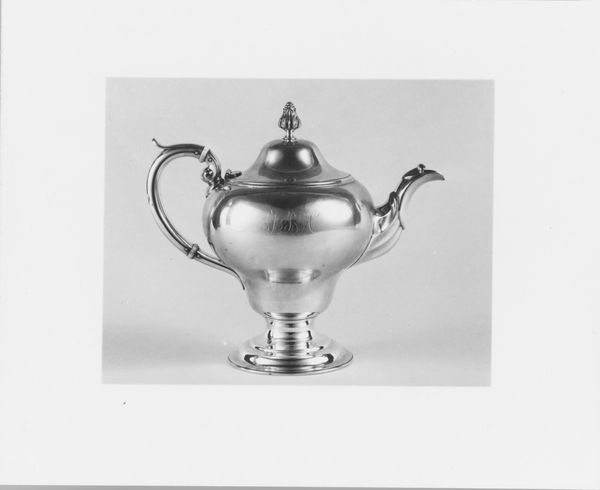
silver
#
silver
#
black and white theme
#
black and white
Dimensions: 7 1/2 x 11 9/16 x 4 5/16 in. (19.1 x 29.4 x 11 cm); 24 oz. (746 g)
Copyright: Public Domain
Curator: Let’s consider this silver teapot crafted by Alfred Welles between 1807 and 1810. It's currently housed in the Metropolitan Museum of Art. Editor: The severe geometry and elegant sheen give the work such an air of reserved dignity. What do you see in this piece? Curator: I see a powerful commentary on class and social ritual. Consider the cultural weight of tea during the early 19th century. It was a luxury item, steeped—pun intended—in the politics of trade, colonialism, and labor exploitation. This teapot isn't merely a functional object. Editor: How so? Curator: Its very existence signifies wealth and participation in a complex global system, often built on the backs of marginalized communities. Think about the origins of the silver itself, and the wood for the handle. What does the crafting and display of such an object say about its owner's position in society, and perhaps even their complicity in unjust systems? How does its gleaming surface both attract the eye and perhaps obscure its problematic origins? Editor: That really shifts my perspective. I was focused on its simple, striking appearance. Curator: The seeming simplicity is deceptive. Consider who had access to tea, to silver, to leisure. Reflect on who did not. The object becomes an emblem of disparity. What conversations do you imagine happening around this teapot? Editor: Probably conversations that upheld the very systems you are critiquing! I hadn't considered the global supply chain inherent even in something as small as a teapot. Curator: Exactly! It invites us to interrogate the silent narratives embedded within everyday objects. Editor: I’ll never look at a teapot the same way again. Thanks for that critical perspective!
Comments
No comments
Be the first to comment and join the conversation on the ultimate creative platform.
